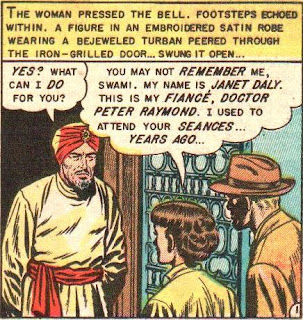
In space, of course, nobody can hear you scream. Partially because there ain't a lot of horror up there. Last year, NASA responded to a Freedom of Information Act request for:
1. The list or index or directory or catalogue of books for recreational/off-duty reading at the ISS. [International Space Station – CRWM]
2. The list or index or directory or catalogue of movies and television shows maintained at the ISS.
3. The list or index or directory or catalogue of books of music maintained at the ISS.
The eleven page response from NASA provides some interesting glimpses into the reading habits of our astronauts. It's no surprise that sci-fi books are a popular favorite on the space station. However, it may comes as a surprise that Lois McMaster Bujold, author of the multi-volume Vorkosigan Saga, is the single most represented author in space (with 8 books), just squeezing ahead of David Weber's eight-volume Honor Harrington series. Isaac Asimov has only two books orbiting the planet. Jules Verne a mere one. Arthur C. Clark is not represented at all. H. G. Wells remains a strictly terrestrial writer.
I was surprised to see that the business self-help book Ten Day MBA appears on the ISS's shelf. What budding capitalist felt, "Sure, being an astronaut is nifty and all – but someday I'll have to get a real job"? Perhaps the strangest book on the ISS shelf is Wayne Grudem's Systematic Theology: An Introduction to Biblical Doctrine, a 1,200 page hardcover doorstop of a book about contemporary Biblical interpretation. The addition of this book is all the more odd considering that the shelves of the space station do not contain a Bible. They do, however, contain Darwin's Origins of the Species.
The sole horror novel available to astronauts is Dan Simmons's Winter Haunting, a spook story about a man returning to his small town home to confront otherworldly evil. Notably, the work is a sequel, though the previous volume is not available up there.
This suggests that Barker's Law – Clive Barker's hypothesis that every American home contains a copy of the Bible and a book by Stephen King – does not hold in space.
I assume that the brains at ground control decided, at some point, that the last thing a bunch of dudes in a small collection of pressurized tin cans floating in a vast all-destroying void needed was a bunch of films to freak them out, because there are very few horror movies maintained on the ISS. Even the titles tat might be considered horror tend to shade into action, thriller, and sciffy genre territory.
NASA reports that King Kong is available, though it is unclear whether astronauts are watching the classic original or Jackson's CGI blow-out. The Matheson adaptation Stir of Echoes, starring Kevin Bacon, is kept on the ISS. Your games of six degrees of separation need no longer be bound by gravity's pull! Finally, The Sixth Sense orbits above us. Though, honestly, it only gets watched once every mission. Once the new astronauts have seen and know the twist, it gathers space dust on the shelf until a fresh batch of newbies arrives.
What do you say, Screamers and Screamettes, should we buy NASA a copy of Alien for the International Space Station?
 In the last Link Proliferation post, I included a link to a story about the Australian giant burrowing cockroach. The story claimed - and I passed along said claim - that the beast was possibly the world's heaviest bug.
In the last Link Proliferation post, I included a link to a story about the Australian giant burrowing cockroach. The story claimed - and I passed along said claim - that the beast was possibly the world's heaviest bug.





































